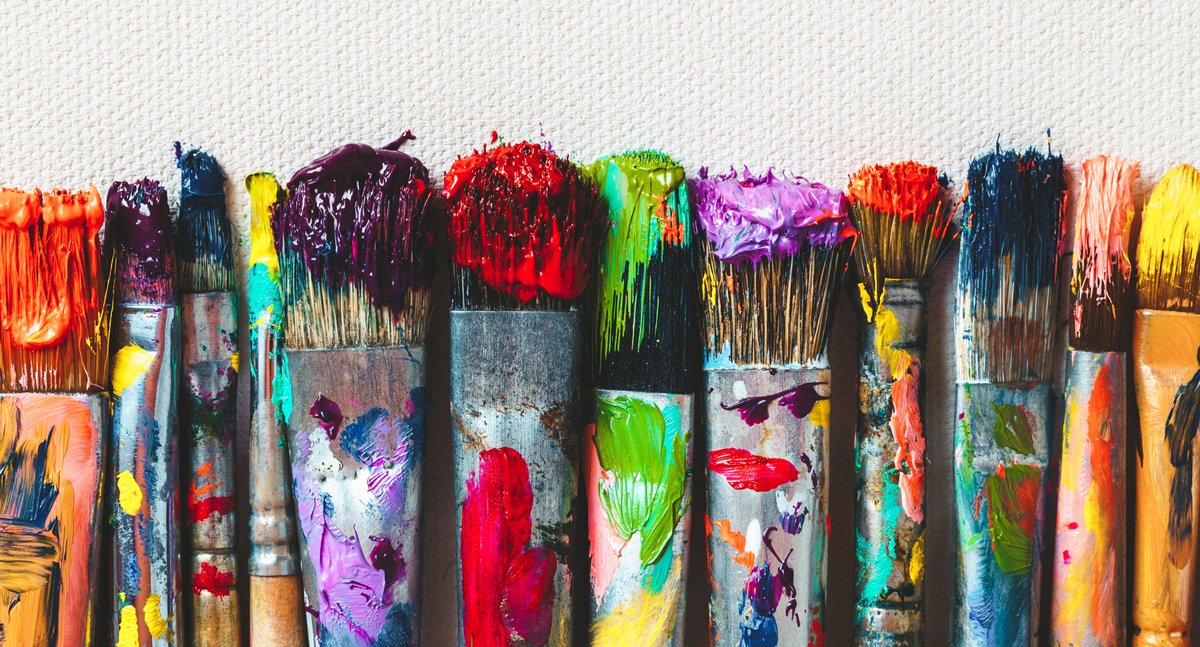The Elements & Types of Paintbrushes for Artists
“Painting with brush is very therapeutic, forces me to slow down and be in the moment.” -Edna Pines
Paintbrushes are among the most powerful tools in art. However, choosing the best one can become overwhelming when faced with the vast range of options for applying paint to a surface.
Elements of a Paintbrush
Each paintbrush has four main parts. First, the bristles or hairs are at the tip of the brush and can be synthetic, natural, or a combination of both. The next piece of the paintbrush is the ferrule, which is a metal piece connecting the brush handle to the bristles.
The crimp serves as part of the ferrule and is an indented area that secures the ferrule to the handle. Finally, all paintbrushes have a handle, typically wood or plastic.
Types of Paintbrushes
Each type of paintbrush has a specific purpose. Broad brushes cover large areas, and smaller brushes render details.
Artists can distinguish the brush size by the number printed on the handle. The higher the number, the bigger the brush or the more bristles it contains. However, brush numbers are inconsistent between manufacturers, so there’s no standard sizing.
Round Brushes
Round paintbrushes are among the most versatile. They’re well-suited for outlining, sketching, detail work, and filling in small areas. Artists can create lines of all sizes and thicknesses with a round brush.
Liner Brushes
Liner, or rigger, brushes are thin with longer bristles to create fine, consistent lines. A liner brush may have a flat or square tip or come to a sharp point. They’re ideal for small areas, minute details, and signing your name in the corner of your work.
Angled Brushes
Angled brushes are ideal for creating clean lines — especially a line or an edge near another element of the painting. Angled brushes are also beneficial when applying curved strokes, filling in corners, or using the tip of the brush to target small areas.
Flat Brushes
A flat brush is typically wide but not thick. As a flat brush’s bristle length can vary, it can appear to be more square or rectangular. A flat brush is frequently used for broad brushstrokes, but it can also create a narrow line when its edge is used to apply the paint.
Filbert Brushes
Like a round brush, a filbert is highly versatile. It’s a narrow, flat brush, and the hairs at the end of a filbert form a rounded point.
The filbert can create a fine line when used on its side, but it draws a broad brushstroke when flat. With varying pressure, it can generate a tapering mark. Due to its diverse capabilities, the filbert is a favorite of many artists.
Fan Brushes
A fan brush has a thin layer of widely spread-out bristles. It can produce special effects, such as stippling or multiple lines at once. A fan brush can also form the appearance of texture and depth and is often used to highlight certain areas and smooth out brushstrokes.
The more you use your paintbrushes, the more comfortable you will become with their best uses and capabilities. Soon, the selection of brushes becomes intuitive, and you’ll know what you need for each element of your work.
